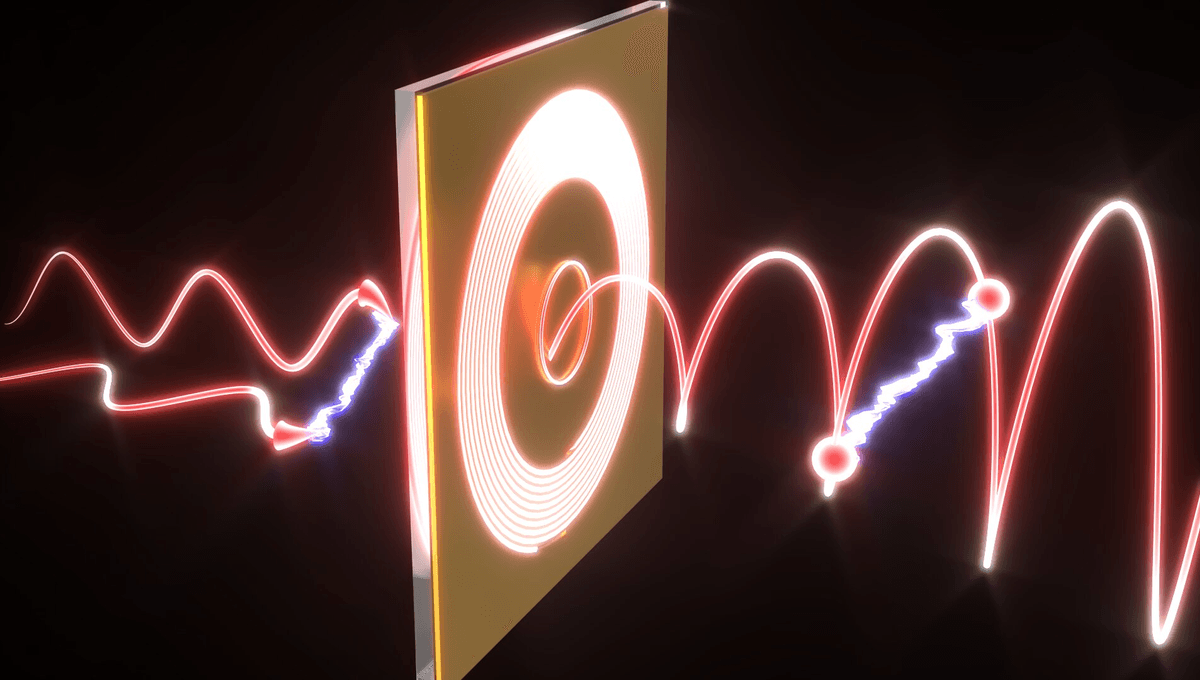
Quantum entanglement comes in a new form, one that could be used to make quantum information technology smaller, once it becomes practical outside the laboratory. The work relies on the fact that when photons are restricted to spaces smaller than their wavelengths two of their properties merge into one.
Quantum entanglement links the destinies of particles, even when they become separated. In the simplest example, two electrons are entangled so that they must have opposing spins. When action is taken to reverse the spin of one, the other’s spin will change as well, no matter the distance between them, as long as the entanglement remains.
Despite helping discover it, this concept disturbed Einstein so much he labeled it “spooky action at a distance” and thought it must be wrong. However, what was theoretical in his day has now been demonstrated over ever larger distances and with more particles. In the process, we’ve learned there are different ways to entangle particles, and a new one has just dropped.
Forms of entanglement are defined by the entangled properties, such as spin or polarization, which must change for one particle when affected for the other.
The wave/particle duality of light means that photons can be entangled as well as things like electrons we think of more in their particle form. Photons’ direction of travel can be entangled, for example, so that if one is changed there will be a corresponding change in direction for the other.
More relevantly for this work, photons have angular momentum, like solid objects, and this can also be entangled. A planet has two forms of angular momentum – its rotation and its orbit around the Sun – and photons normally do as well, which by analogy are known as spin (or SAM) and orbit (OAM). It’s possible to entangle the spin or the orbit of two photons together, or even to entangle one photon’s SAM and OAM together, ie entangling it with itself.
However, when photons are contained within structures that are smaller than their wavelength, these measures collapse into each other, and so the definition is of total angular momentum (TAM). It’s this feature, only occurring for photons confined in this way, that has now been entangled for the first time.
Researchers at Technion-Israel Institute of Technology used gratings to confine photons within a circular or spiral nanoscale platform and mapped their states, entangling the TAMs of pairs of photons before scattering them to free space. Entangling TAMs might seem like a minor development, seeing that SAMs and OAMs have each been entangled before, but the authors write: “We observe that entanglement in TAM leads to a completely different structure of quantum correlations of photon pairs, compared with entanglement related to the two constituent angular momenta.”
Quantum entanglement is considered key to quantum computing. The authors propose their work could lead to information processing conducted using the entangled TAMs of photons confined to chips. Entangling TAMs allows quantum processors based around photons to be smaller than would be possible if one of the properties that only emerges under less confined conditions was used. That potentially enables the miniaturization of future quantum computers.
Moreover, by confining the photons on this scale, the authors increased the interaction between the photons and their surrounds, opening up a wider range of behaviors on which to act.
The study is published in Nature.
Source Link: The First New Type Of Quantum Entanglement In 20 Years Has Been Announced